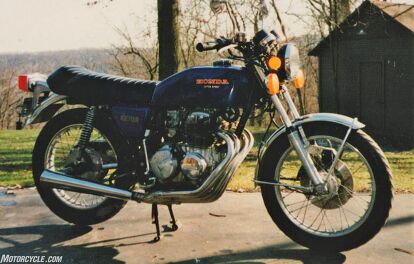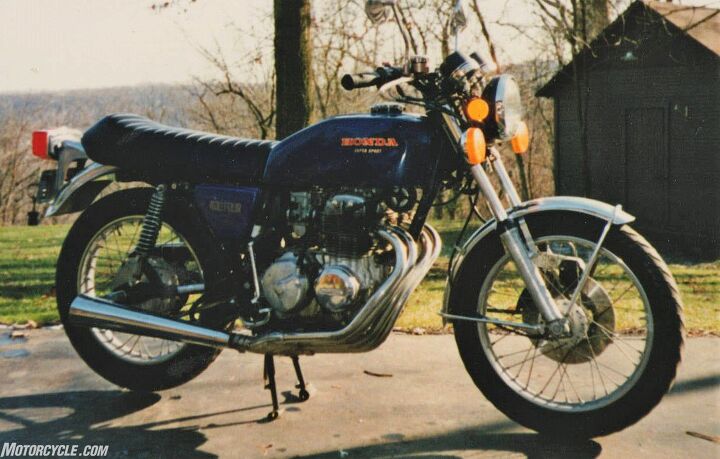Then Again, Maybe It's Not All About the Money
The setting is a small Midwestern college, the type that pretty much constitutes its own dot on the map, with brick-paved streets downtown, hardwood shade in the park, and colonial architecture peppered about campus. At its periphery: the house where you are presently sleeping, nestled between manicured quads and second-growth forests, a pastoral acropolis and the amber cornfields beyond. This house is, in contrast, a structure most easily defined as a festering sore bandaged with aluminum siding. Its insulation, for instance, is shredded newspaper. Winter heat circulates via a fan suspended from coat hangers affixed to a stained drop-ceiling above a gas stove with broken igniters. The walls are so rampantly mouse-infested, you’ve resorted to putting an overturned pot with peanut butter on it in the center of the flooded kitchen sink each night – a system devised because it’s easier to run the floating rodents down the disposal than to empty a hundred traps every morning before class.
Seriously.
On the porch is your blue 1975 Honda CB400F. Beside it sit a half-upholstered couch and a keg floating in ambient-temperature, mouse-free water. The yard appears to have been hit with a polyethylene cluster bomb of red and semi-transparent beer cups. The time is 7:43 am and you cannot ignore the fanatical banging at your front door any longer. You shuffle down the stairs wearing your blue goldfish boxer shorts, nothing more.
On the other side of the door is your landlord, and she is loud. She reminds you that city fire code prohibits upholstered, “indoor” furniture from being stored overnight on porches. You are also informed that it is against the law to park a motorcycle on the porch. Any kind of outdoor party is in violation of your lease agreement. And she has a good mind to go through the house and see how many sleeping people, in excess of the five listed on the lease, are residing there illegally.
None of this bothers you, and it’s not because your name is one of those absent from the lease. What bothers you is that this angry fat woman’s weasely little husband is picking up beer cups and setting them on your 1975 CB400F, albeit with its dented tank and Heli-Coiled cam chain tensioner, cracked side cover, missing side stand and rust spot on cylinder #2 of its gracefully curved 4-1 exhaust. He’s picking up both the red and semi-transparent varieties, making concentric stacks and arraying these stacks buffet-style across your bike’s blue tank and aftermarket (but still very nice) seat cover.
You remove the cups and place them on the cement.
Your landlord questions if you are, in fact, listed on the lease.
Her husband puts another cup on your seat.
It is all you can do to keep from beating the achromatic little twerp senseless on the spot.
I am certain that, because by virtue of the fact that you are reading Motorcycle.com right now, we probably share an opinion about motorcycles and beer cups.
And maybe, by chance, you read a feature that appeared in Cycle World a few years ago, one in which I examined the reasons why road racers and track day riders let off the throttle and get on the brakes earlier than they need to; in it I provided statistical evidence to support the notion that the average rider’s most pressing concerns while screaming down a straightaway toward a hairpin are monetary, and hinted, oh-so-subtly, that some of these survey respondents might be less than fully composed, or even wimps, by holding myself up as a prime offender, the most egregious exemplar of such cheapskate behavior.
Well, if you happened to miss that article, then good. I got it almost completely wrong. It isn’t about the money; money was just an easy way for me to phrase the survey question. It’s about the way we personify our bikes. To stack beer cups on a bike is to disrespect it, not like a locker room mom joke, but like a midfield loogie to the forehead. And out of a sense of loyalty, we will not have our bikes disrespected. Furthermore, we will not betray them through inattention or negligence: i.e., by crashing them ourselves.
Another anecdote in support of this illogical animation theory:
You’re back in school, again, three years later, and one afternoon your rich roommate rolls home on a new BMW R1200C – $17,000 in 1999, or there about, with all the aftermarket extras – and your initial impression is that the bike is ridiculous and that your roommate is the biggest tool bag in the world. A few minutes later, he lets you ride it.
Yeah… Okay. Maybe he’s not so dumb…
The deal that transpires is that as long as you download a manual and perform the service according to schedule, you can ride it whenever you want. You subsequently put thousands of miles on that bike, and it doesn’t take long for the calculations to begin. At its projected rate of depreciation, you’ll be able to afford a similar bike in about a decade.
Exactly ten years later you buy one off Ebay.com without a test ride and hate it. You’re older, the James Bond thing has worn off, and what you’re stuck with is a geriatric highway tractor. The rake makes 4-way stops in town a total pain, but trying to get a BMW dealer to reset an ABS2 fault and supply you with the code – a two-minute job for which you are willing to pay an hour’s dealer-rate labor – is all but impossible without hemorrhaging an additional $300+ for fluids you can drain, change and/or bleed yourself, and these details alone are enough to plant a real seed of animosity for this lethargic Geritol bike and the hoighty-toighty Teutonic outfit that assembled it.
Four years elapse before you finally embark on a real cross-county trip, sans ABS. You load it up and start out with high hopes in 96° F heat, and soon your head is cooking so bad you are stopping at gas stations to pack your helmet liner with ice. In Indiana, you and your bike narrowly escape death when a semi smashes into the truck in front of you at a poorly marked construction site.
You take US96 through southern, lunar-landscape Kansas, nearly lose consciousness from sunburn and boredom, and squat in the bike’s late-afternoon shadow while a highway patrolman runs your license because you mistakenly slalomed road cones in an attempt to break the monotony. Later that same day, you try to race a storm the extra 39 miles between Sheridan Lake (pop. 66, no hotel) and Eads, Colorado, (pop. 609, one hotel) and lose badly, being blown five feet at times by sideways sheets of rain on a rutted highway in the dark.
It is while gurgling along at better than 95mph in an attempt to evade phantom tornados amassing in the blackness that you first speak to this machine, and when you finally cross a muddy semi parking area with puddles so deep they submerge your exhaust, to the applause and upheld Busch Lights of the truck drivers assembled under the hotel awning, you mentally thank it.
Because just about everyone who has ever raced has, at some point, whispered “Come on… come on…”
Who were they talking to? A machine?
One last experiment:
Imagine hitting an apple with a sledgehammer. No problem, right? A couple of guys named “Gallagher” have actually made a pretty good living at it.
Alright, now chloroform a hummingbird and try to do the same thing. Not so easy, huh? Would it be such a stretch to extend this analogy to a Hyosung CDI box and a Desmodromic valve assembly?
Sure, the CDI box is complex, but there is just something about the human psyche that craves precision mechanics. In an age where engine, brake and suspension performance is becoming more algorithm-reliant every day, timing belt covers are getting lost, bevel gears are having windows installed and dry clutches are getting a little better look at the scenery for good reason. Bimotas are more than just the motorcycling equivalent of a Prada handbag; they’re objectively neat. Motorcycles are unique because they are covered with neat stuff that you can see, like blown-up hummingbirds with transparent wings and metabolic clockwork scaled such that one can appreciate them without tweezers and a microscope. Stuff that we can all maintain and polish and admire without getting bogged down in too much of an ontological quagmire about who made it. Because guys and gals just like us did. They’re complex and beautiful, yet we can still turn a wrench on them when we feel the need, and maybe that is something fairly rare. Forget lazy man’s Zen, what we’ve got here is mortal man’s stab at omnipotence…
Once again, none of this has anything to do with money. It’s about time and pride; if you’ve designed it or fixed it or in some way maintained it, you’re a part of it.
So when I talk about not wanting to crash my crappy old Honda CBR400RR at the track, it’s about more than repair costs and a perpetually disgruntled wife. It’s about gear-driven overhead cams and round headlights and graphics in hues that can be found nowhere else on Earth, save in faded catalogs of early 1990s ski clothes. It’s about loyalty to the 400cc Honda offspring of a bike I rode to class every day in college. It’s about the ongoing tension between an assembly of physical stuff that is easily replicated and a clutter of intangible things that most certainly are not.
“Monetary considerations / repair costs” is just an easy way to say it. I knew that when I wrote the Cycle World survey, and respondents knew that when they filled it out – an inside joke employed as a rhetorical crutch by a lazy man with limited verbal skills and a modicum of character space in which to operate. Just two words, a backslash, then two more words – not much of an explanation, but we’re all riders here.
You probably know these stories better than I do.
More by John Evans








































Comments
Join the conversation
Loved the honesty of this article. Good writing about motorcycling is what we need more of. Not just writing about good motorcycles.
Odd article, but I had a 1977 CB400F, so I enjoyed that part.